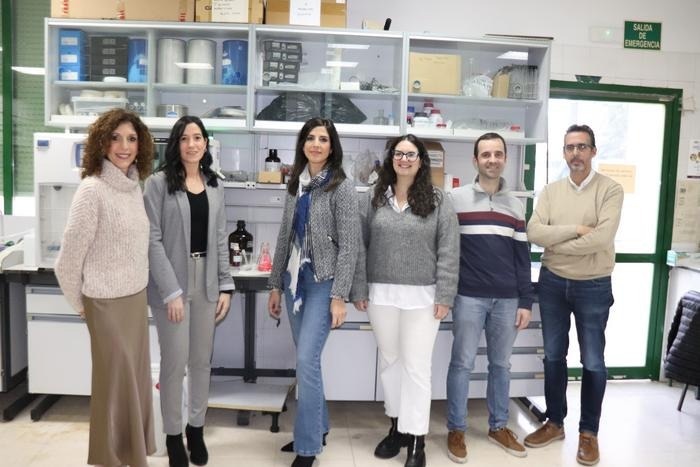The solid material that remains after treating wastewater is called sewage sludge. Data from Spain’s Ministry for the Ecological Transition and the Demographic Challenge indicate that the country generated 1.2 million tons of this waste in 2021 alone, and handling it is becoming an increasingly significant problem. Its high concentration of metals restricts its use, creating environmental issues, even if part of it could have agricultural uses, such as being used as fertilizer after composting.
 Image of the two UCO research groups that participated in the study. Image Credit: University of Córdoba
Image of the two UCO research groups that participated in the study. Image Credit: University of Córdoba
Thanks to a recent study, this waste can now be recycled into activated carbon, an extremely valuable substance with significant industrial interest. This compound's high porosity gives it a significant ability to adsorb molecules on its surface, which makes it particularly helpful in decontamination operations like gas treatment and water purification.
The University of Cordoba’s (UCO) Inorganic Chemistry, Waste Bioengineering, and Green Engineering units collaborated on the study.
The study demonstrates the possibility of obtaining this material under more favorable and sustainable conditions, and obtaining a high-quality product.
María Carmen Gutiérrez, Study Author and Assistant Professor, University of Córdoba
Almudena Benítez, another project researcher, stated that this study transformed the sludge by lowering the temperature required to complete the process, which means that the waste recovery procedure has lower energy costs. This is in contrast to other similar works published previously.
Additionally, the study was able to lower the quantity of what is referred to as an “activating agent” in scientific literature. This is the material that initiates or speeds up the thermochemical process that turns waste into a product that benefits society.
After the first stage of drying the sludge, the dried waste is combined with the activating ingredient. The compound is then pyrolyzed (heated to high temperatures in the absence of oxygen, which carbonizes the residue) and treated to purify and eliminate specific minerals.
From a practical point of view, it is important to propose solutions that can then be carried out on an industrial scale. It is one of the simplest procedures in the literature, and uses technologies that already exist on the market on an industrial scale.
María Ángeles Martín, Professor, University of Cordoba
Hansi Martínez’s doctoral thesis aims to validate the quality of activated carbon derived from sewage sludge. The study team noted that the next stage is for the organization to create applications that are suited for this material.
Journal Reference:
Martínez-Alvarenga, H., et. al. (2024) Integral evaluation of effective conversion of sewage sludge from WWTP into highly porous activated carbon. Journal of Environmental Management. doi:10.1016/j.jenvman.2023.119822